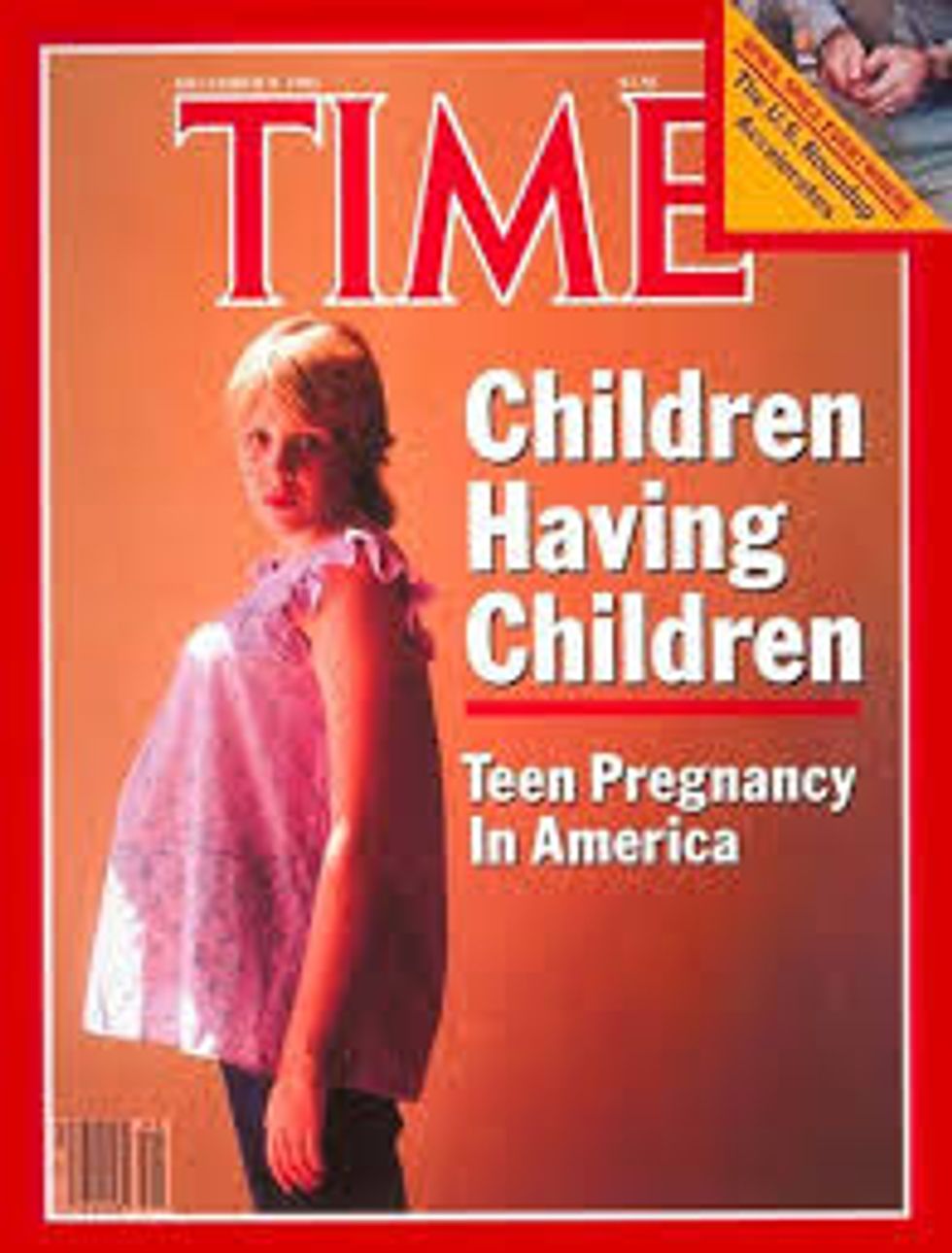The U.S. has the highest rate of teen pregnancy in the industrialized world. Hillary Clinton has been a champion of reducing those rates. As is her style, she has found concrete and effective ways to do so; as a result of her efforts and those of others teen pregnancy rates have plummeted. Since the early 1990s, teen pregnancy rates have declined by 64 percent. This drop affected teens from all racial and ethnic groups and all parts of the country. It means more young people who can finish their education, get a job, gain experience, and form a stable relationship before embarking on one of the most important responsibilities any of us ever undertakes: raising a child.
More specifically, in 1996, Hillary helped to launch the National Campaign to Prevent Teen Pregnancy. I served in Bill Clinton's administration, and in 1996 with strong support from both the President and the First Lady, and the help of many others, I was encouraged to start a bipartisan and nongovernmental effort to reduce teen pregnancies. The stunning progress that we have had since that time is a testament to the first couple's leadership. Hillary has been a strong force behind this initiative and has continued to support it along with Planned Parenthood and other organizations working to insure that more girls and women have access to contraception and other reproductive health services.
The fact is that nearly half of all pregnancies in the U.S. are unplanned. Among unmarried women under 30 the proportion is close to three-quarters. Some of these pregnancies will be terminated, but many women go on to have children that they (and their partners) are not ready to parent and which they say they did not want or want so soon. The result is high rates of poverty and less social mobility among children in the U.S. Accordingly, the National Campaign to Prevent Teen Pregnancy is now working on unplanned pregnancies among young adults as well in an effort to improve opportunity and reduce disparities by race and income.
There are many ways to reduce teen and unplanned pregnancies, including providing better sex education and more opportunities for the less advantaged. But I want to focus on one that is new and especially promising. It's called long-acting reversible contraceptives (or LARCs). LARCs include the intrauterine device (IUD) and the implant.
If a woman is sexually active for five years, her chance of getting pregnant is 63 percent with condoms, 38 percent with oral contraception, but less than 2 percent with a LARC. LARCs are safe and hassle free. They are now recommended as the first line of defense for any woman not wanting a pregnancy by the American College of Obstetricians and Gynecologists as well as the American Academy of Pediatricians. They are the most effective form of birth control because they change the default from getting pregnant unless you are a very careful and consistent user of conventional means of contraception to being automatically protected from pregnancy until you and your partner decide that you really want a child and then have the IUD or the implant removed. (Condoms are still needed to protect against sexually transmitted infections.) These LARC methods are fully reversible, but the choice should always be left with the individual about whether to use contraception and which kind.
Will women choose a LARC if it is offered? We now have a body of evidence that they will. When patients are given a choice of contraceptive method and the effectiveness and safety of a LARC are carefully explained to them and the costs reduced, we see high take-up rates of LARCs and a dramatic reduction in unplanned pregnancies.
Programs in St. Louis, in Colorado, and Iowa, and in randomly selected clinics around the country all shown similar results. In one study of these efforts reported in the Lancet, there was not only a high take-up rate of LARCs but the rate of unplanned pregnancies was cut in half. Other studies show that for each dollar invested the savings to Medicaid and other social programs are about 5 or 6 dollars.
If we could reduce unplanned pregnancies, we would also reduce child poverty and improve social mobility. In my 2014 book, Generation Unbound, I estimate that the growth of single parent families, now driven almost entirely by unwed and unplanned childbearing, has led the child poverty rate to be 25 percent higher than it would be if we had stabilized the proportion of such families at 1970 levels. Of course, these single parents and their children need our help, regardless of why or how they began. But If we can reduce future increases and the high rates of poverty and diminished life chances for children that unplanned or unwanted childbearing causes, it could have a big impact.
I believe that Hillary Clinton can help to make this more positive future for families and children a reality and that is one of the many reasons I plan to vote for her in November.
(The writer of this article is an economist with the Brookings Institution. She is writing this article as a private citizen and her views should not be associated with the institution for which she works. )
###
August 21,2016



